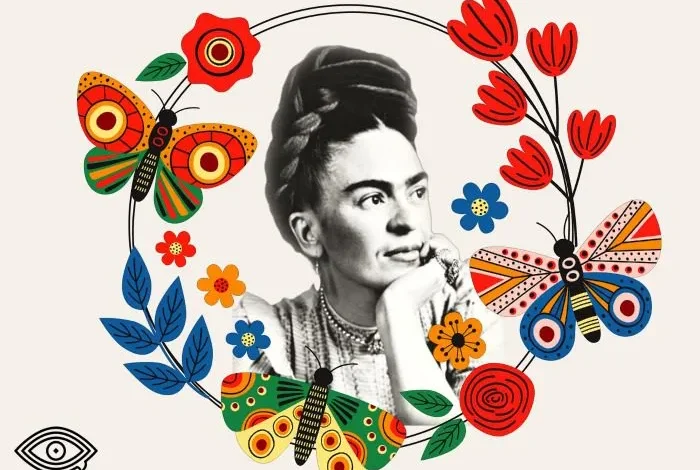Exploring the Life and Art of Frida Kahlo: A Revolutionary Artist

Frida Kahlo (1907–1954) is one of the most iconic and revolutionary figures in the world of art. Born in Mexico City, Kahlo became known for her deeply personal and emotionally charged self-portraits that explored themes of pain, identity, and the female experience. Her work, which blends elements of Mexican folk art, surrealism, and symbolism, continues to inspire millions today.
1. Early Life and Tragic Accident
Frida Kahlo’s life was marked by both beauty and suffering. At the age of 18, she was involved in a severe bus accident that left her with lifelong pain and multiple medical issues. This tragic event deeply influenced her art, as she often depicted her physical and emotional anguish through her paintings. Her accident was a turning point that solidified her journey into the world of art, as she began painting during her recovery.
2. The Personal Becomes Political
Kahlo’s work was revolutionary not only for its artistic qualities but also for its strong political undertones. She was an active member of the Communist Party in Mexico and used her art to address issues of class struggle, colonization, and indigenous identity. Her work was deeply personal, yet it resonated with universal themes, especially regarding the human condition, pain, and resilience.
3. Iconic Self-Portraits
Frida Kahlo is perhaps most famous for her self-portraits. Her best-known works, such as “The Two Fridas” and “Self-Portrait with Thorn Necklace and Hummingbird”, offer a raw and honest depiction of her physical and emotional struggles. Through these self-portraits, Kahlo expressed themes of identity, gender, and her tumultuous relationship with fellow artist Diego Rivera. Her distinctive use of bright colors, unflinching portrayal of her suffering, and elements of surrealism made her work instantly recognizable.
Kahlo once said, “I paint myself because I am so often alone and because I am the subject I know best.” This personal exploration extended beyond her physical self; it also explored her emotional world, Mexican culture, and questions of life and death.
4. Her Relationship with Diego Rivera
Frida Kahlo’s relationship with Diego Rivera, a renowned Mexican muralist, was complex, passionate, and often turbulent. The two artists were married in 1929, divorced in 1939, and then remarried in 1940. Rivera had a significant influence on Kahlo’s political beliefs, and their relationship profoundly impacted her life and art. Although their marriage was marred by infidelities and tensions, they remained deeply connected both emotionally and artistically. Some of her paintings reflect this tumultuous relationship, with themes of love, betrayal, and heartache often recurring in her work.
Related Post
5. Legacy and Influence
Frida Kahlo’s influence extends far beyond the art world. She is considered a feminist icon for her unapologetic representation of the female experience, especially in a time when women’s voices were often marginalized. Her art challenges traditional notions of beauty, gender, and cultural identity, making her a symbol of empowerment for many women, artists, and activists today.
Kahlo’s distinct style, often described as a mix of surrealism, symbolism, and realism, has inspired countless artists, and her life has been the subject of films, books, and exhibitions. The 2002 biographical film “Frida”, starring Salma Hayek, brought her life and work to an even broader audience, cementing her status as a cultural icon.
6. Kahlo’s Enduring Popularity
Today, Frida Kahlo’s work is celebrated globally. Her home, La Casa Azul (The Blue House), in Coyoacán, Mexico City, has been transformed into a museum dedicated to her life and legacy. Her works are frequently exhibited in some of the world’s most prestigious galleries, including the Louvre in Paris and the Museum of Modern Art in New York.
What makes Kahlo’s work so enduring is its raw emotional honesty and its unapologetic embrace of pain, love, and identity. In a world that often hides or sanitizes suffering, Kahlo laid bare her experiences and emotions, giving voice to the complexities of the human condition.
Conclusion
Frida Kahlo was a trailblazer, an artist who transformed personal suffering into profound artistic statements. Her work continues to resonate with people across the globe, inspiring new generations of artists, feminists, and dreamers. Kahlo’s legacy is one of resilience, passion, and an unwavering commitment to authenticity, making her one of the most celebrated and influential artists of the 20th century.
Whether you’re exploring her art for the first time or revisiting her iconic works, Kahlo’s life and paintings remind us of the power of art to transform personal pain into universal truth.




